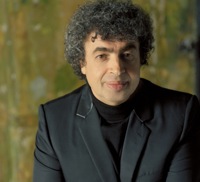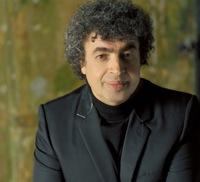
In the gleaming highlight of a program bedeviled by a medical emergency that sidelined soloist Gautier Capuçon (and the Schumann Cello Concerto along with him), this best-known of Sibelius symphonies delivered, in every respect. The opening colloquy of woodwinds was frank and brightly discursive. Darkly shimmering string tremolos hinted at deeply shadowed provinces ahead. The movement unfolded in an involving exposition of opposites — becalmed transparency and driving momentum, spacious brass assertions and ruminative inner rumblings, all leading to a climax that felt at once frenzied and handsomely self-possessed.
The deliberately plodding cadence of the Andante gave way to a playful swooning and then a chastened sobering-up. More restlessness and reconsiderations followed, as figures from the opening material were handed around the orchestra, reconfigured, and remade. And then, in a finale that embraced both bolting urgency and wistful nostalgia, Bychkov brought the Sibelius Fifth back home with a decisive, dramatically unhurried punctuation of final chords.
The playing throughout was exquisitely measured, expressively natural and controlled, explosive and serene, precise and subsumed in a vision of the whole. A better and more fully integrated performance of this wondrous piece belongs to some other, inaccessible musical universe.
Triumph Preceded by a Tough Slog
That triumph, which occupied the second half of the program, came after some preintermission hard labor. In place of the Schumann, the Symphony subbed a double bill of the Pavane pour une Infante defunte (Pavane for a dead princess) and La Valse, by Maurice Ravel. Capuçon’s late scratch meant that these works were lightly rehearsed, and it showed. The tremulous, delicate-to-a-fault Pavane sounded coarse and unbalanced. Until a fireworks ending, this Valse account lacked the demonic swagger and sense of inevitable, imploding tantrum packed into the piece. If nothing else, the contrast of the Sibelius and the Ravel demonstrated how much productive, communicative work an ensemble and guest conductor can accomplish with sufficient rehearsal.The program opened with Henri Dutilleux’s showy, superficial, and ingratiating Métaboles (1964). With a running time of under 20 minutes, the piece offers an unfolding kaleidoscope of moods: “Incantatory” yields in turn to “Linear,” “Obsessive,” “Torpid,” and “Flamboyant.” The blurry-haired, Russian-born Bychkov, who is the chief conductor of Cologne’s WDR Symphony, elicited some beguiling effects from the San Francisco Symphony, an ensemble he first led here in 1989.
The opening movement had an insistent, imperative tread. Then the high and low strings — violins and basses — moved in cleanly discernible transverse lines. As the angular, shardlike pyramids of “Obsessive” gave way to “Torpid,” Dutilleux offered his wittiest and most counterintuitive writing. It was the percussion (of all things), fitful and resigned, that conjured the listless mood, over a swarm of futile orchestral chords. Then came the slightly misnamed “Flamboyant,” which had to fight its way through some clotted textures to brassy, hard-earned blasts at the end.

